USB Energy Meter J7-H (Hidance)
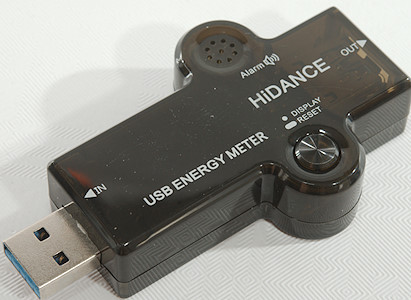
Official specifications:
-
Voltage: 3.60 - 30.0 V (0.01 V)
-
Current: 0.00 - 5.10 A (0.01 A)
-
Capacity accumulation: 0 – 99999 mAh (0.001 Ah)
-
Power accumulation: 0 – 999999 mWh (0.01 Wh)
-
Power calculation: 000.000 - 150.0 W (0.01 W)
-
Impedance: 1 - 999.9 Wh (0.1 ?)
-
Temperature: 0 - 80 °C (1 °C)
-
Timing time: 999H59M59 S (1 S)
-
USB D+ voltage: 0 - 2.99 V (0.001 V)
I bought this from Aliexpress dealer HIDANCE Official Store
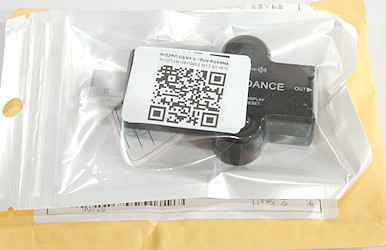
I got it in a plastic bag inside a eneloop, the QR code links to mediafire with a directory for all the different USB testers, there is both software and manuals. The mediafire will open extra windows with ads!
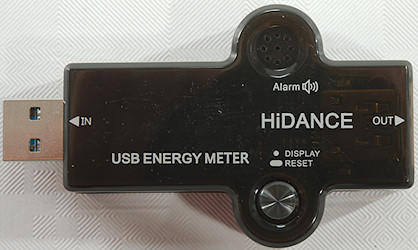
The display is on this side, but it is rather dull. There is a single button and a buzzer.
The button is fairly simple:
-
Single press: Next screen.
-
Dual press: Reset capacity (Ah).
-
Triple press: Reset energy (Wh).
-
Quad press: Reset time.
-
5 presses: Set timing.
-
Long press: Flip screen.
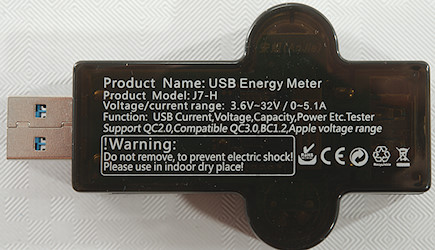
The specifications are listed on the back
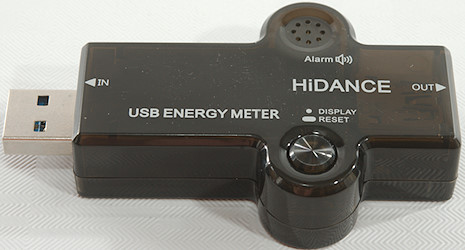
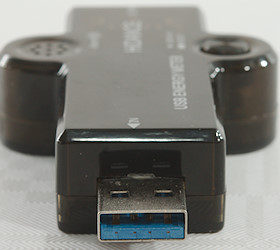

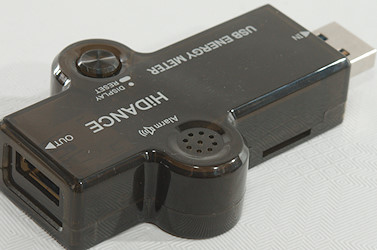
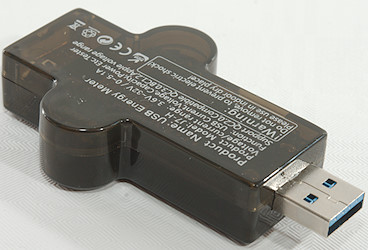
Display and functions
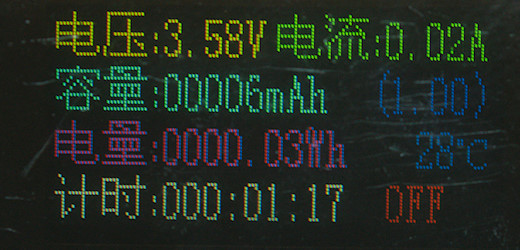
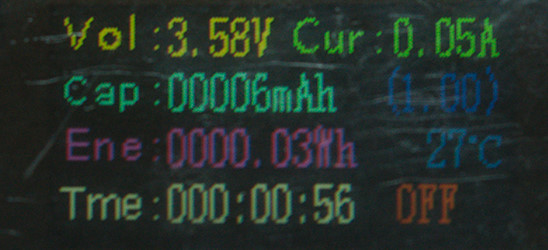
This screen is both in Chinese and English version.
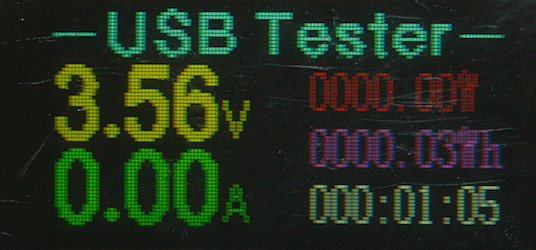
Larger font for voltage and current, it shows W, Wh and time
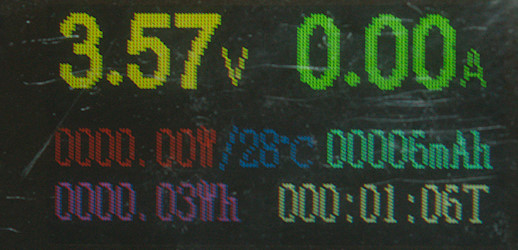
Larger font for voltage and current, it shows W, mAh, Wh and time
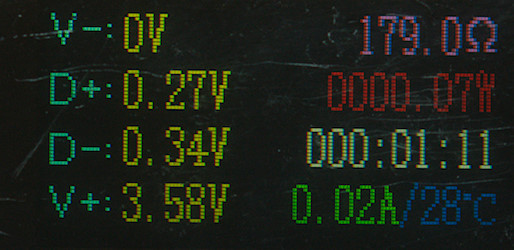
The meter cannot show a protocol names, but it can show the voltage on the data lines and also the calculated load resistance.
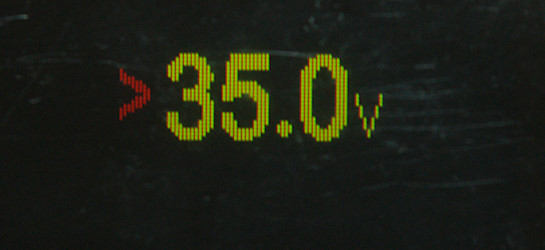
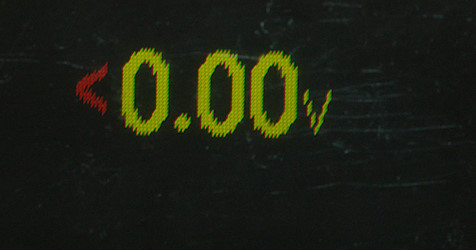
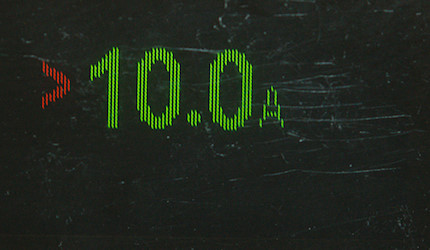
Set limits for automatic turnoff.
Hold the button down to reduce value, a double press will increase the value, a single press followed by holding the down the button will automatic increase value.
Measurements
Measurements are done on usb port.
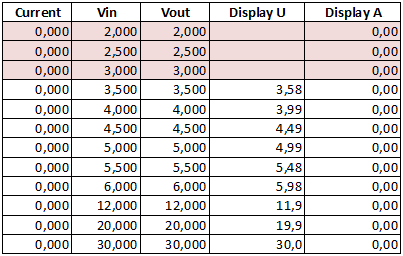
The meter powers on a bit before it can measure precise.

The current precision is good, but it has serious trouble with 5A, the power MOS could not handle it and died.
-
Own current consumption is 12mA and 16mA when Bluetooth is connected.
-
Internal resistance is about 0.17ohm including connection resistance.
-
Remembers Wh and Ah when power is off
-
Voltage display is within 0.1 volt in the 4.0 to 30.0 volt range.
-
Current display is within 0.02 ampere in the 0 to 5.0 ampere range with 5 volt supply.
-
It is possible to enable audible alarms for over current, over voltage, under voltage.
-
Meter has a buzzer.
Android application
The application must be downloaded from mediafire and the moved to the phone, before it can be installed.


When running it is very easy to change between Chinese and English.
When connected the +/- buttons will change screen on the meter.

Some data collected from the USB meter, current stays at zero due to the burnt transistor.

The screen layout looks a bit strange on the meter and there is a reason for it, the application is for multiple types of hardware.

Turning the meter phone around makes the curve larger, but it is necessary to scroll to see the text.
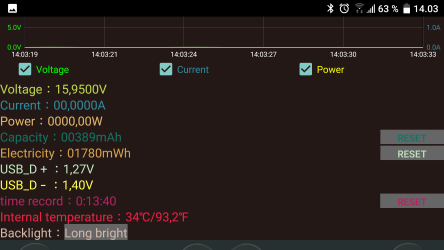
Here is some of the text.
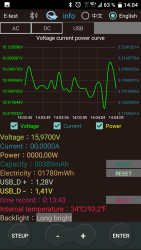
It is also possible to zoom the screen, both current and voltage zooms at the same time.
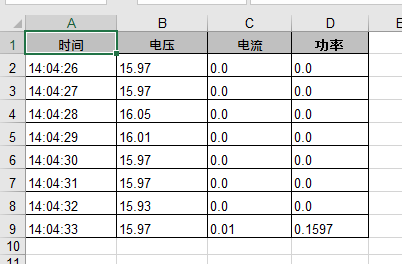
It is possible to save data in XLS format, the application was running in English mode, but the text here is in Chinese.
Tear down
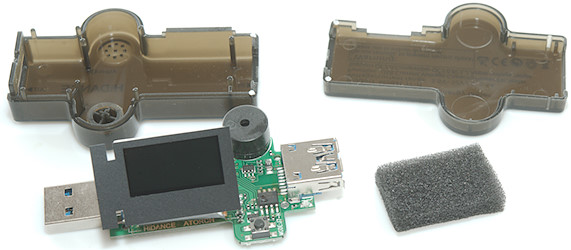
There is no screws holding the meter together, it can just be pulled apart.
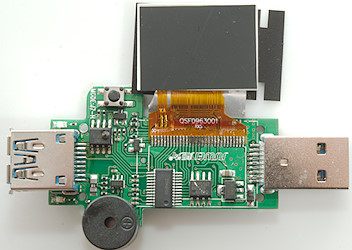
The circuit has a microprocessor (Marked 02HR402) with a extern EEPROM (24C32: 4K\*8) next to a voltage regulator (ME6203: 36V in 3V out).
The current switching is a power mos (TC4953: 2 x 3.7A at Vg 4.5V) at it needs 4V to work and it died during my 4V test, i.e. where the voltage basically was to low for it. The resistor marked 01 must be for current measurements, this makes the small IC (Marked 8331) either a OpAmp or a ADC converter.
There is a blue led on each side of the female USB connector, they are used for Bluetooth indication.
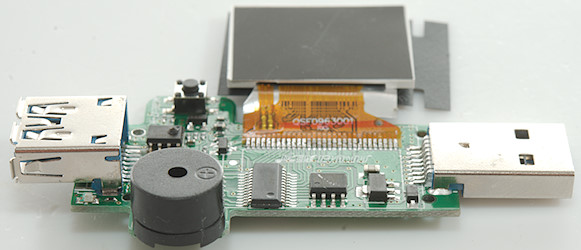
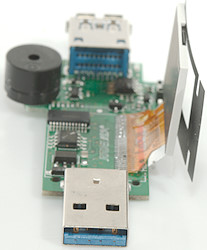
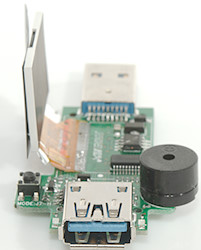
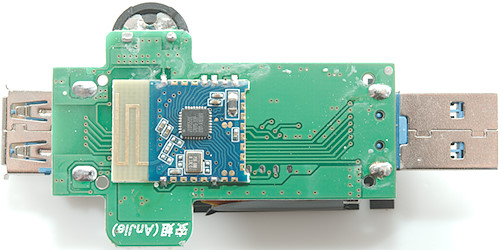
A standard Bluetooth module
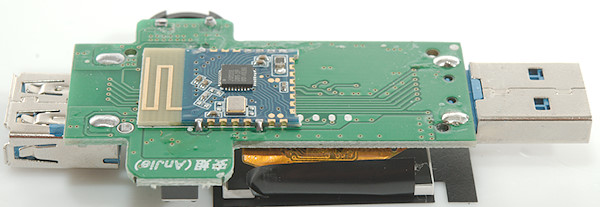
Conclusion
The meter works, but it not a high precision type and cannot trigger anything.
There is some problems with it:
The display is fairly dim.
The transistor cannot handle 5A at low voltage (Best solution is probably to short it).
The Bluetooth application is very simple, a better logging would have been nice.
Notes
How do I make the test